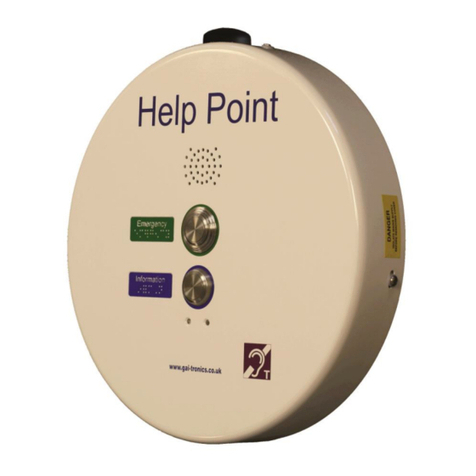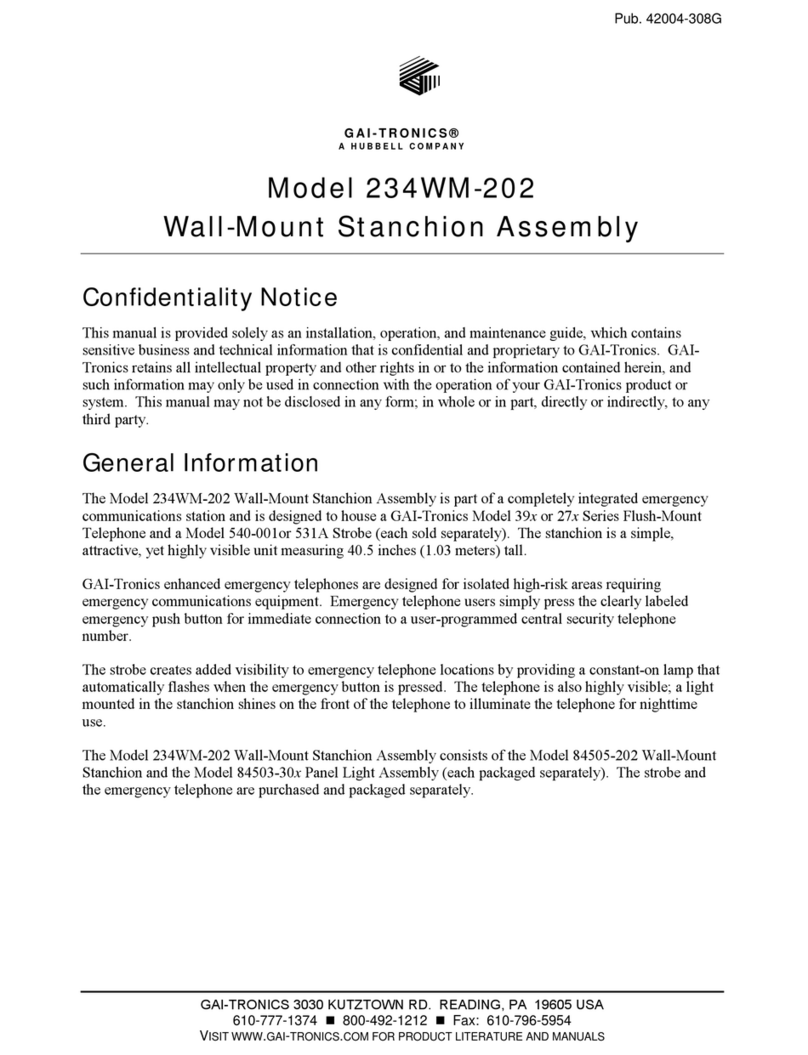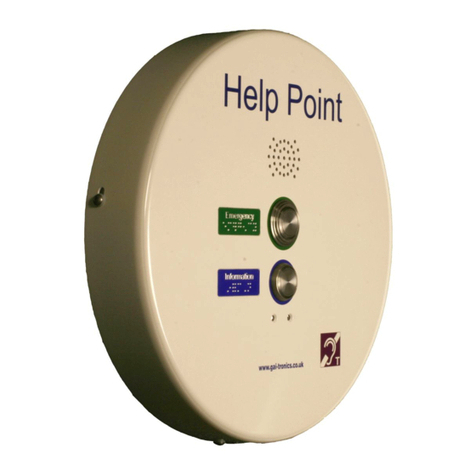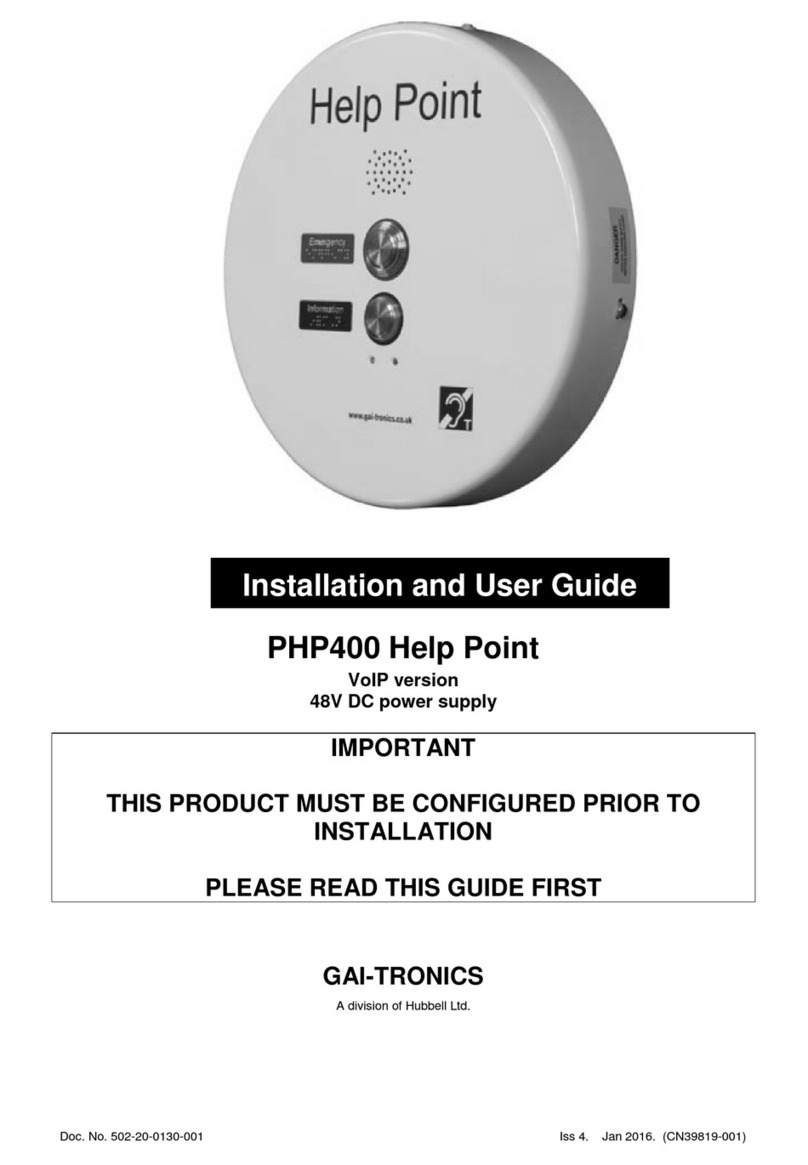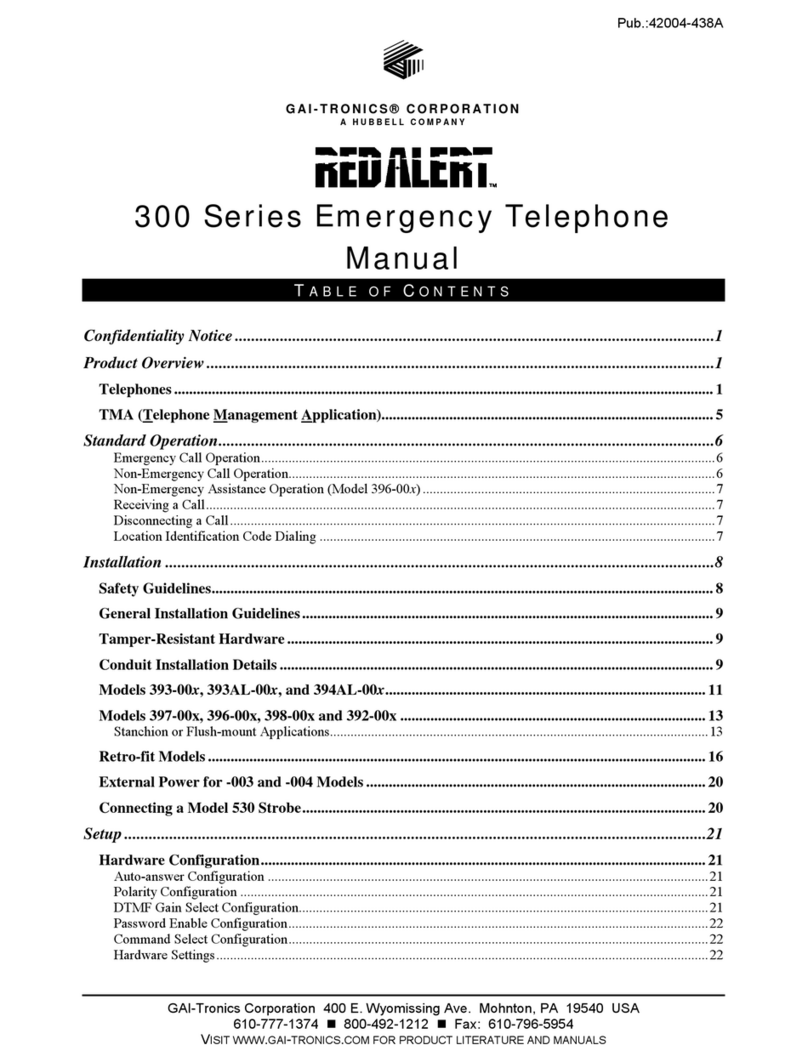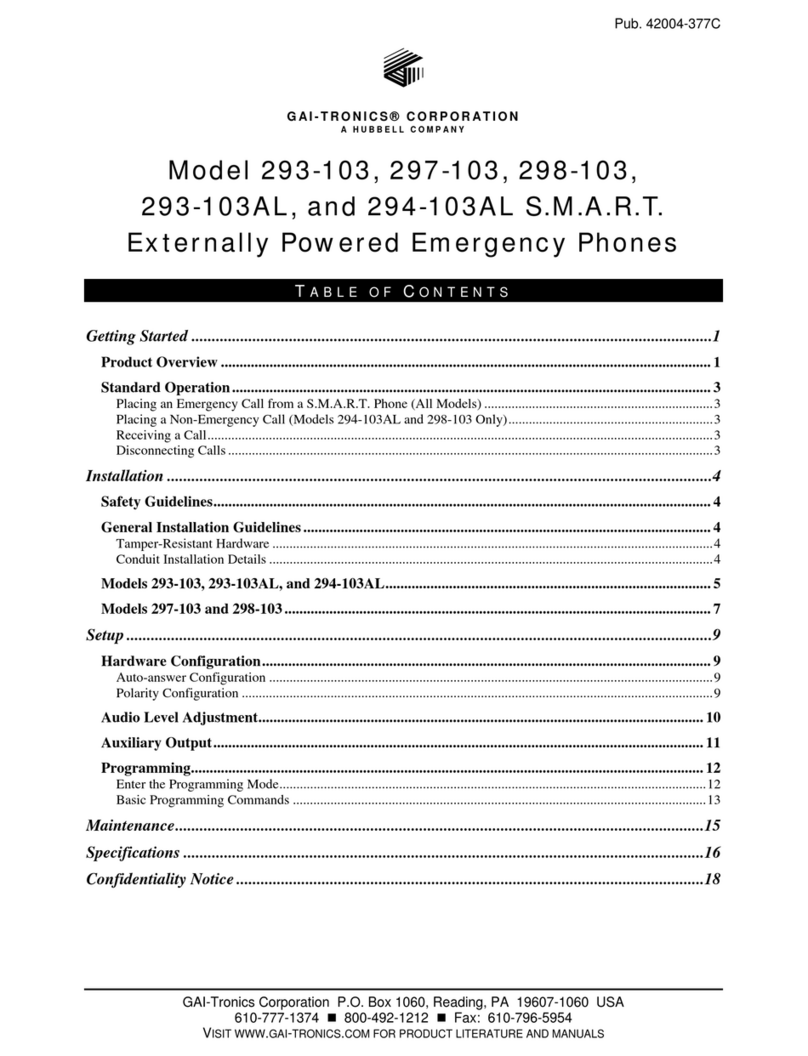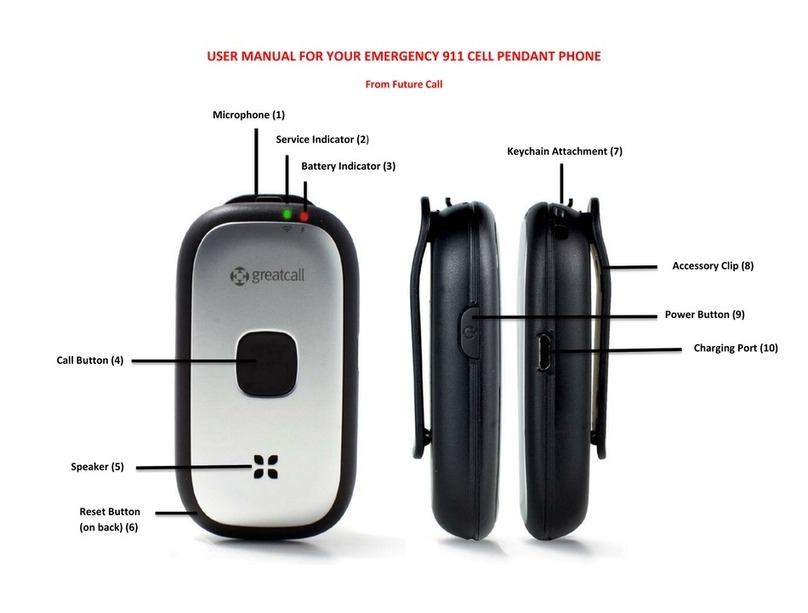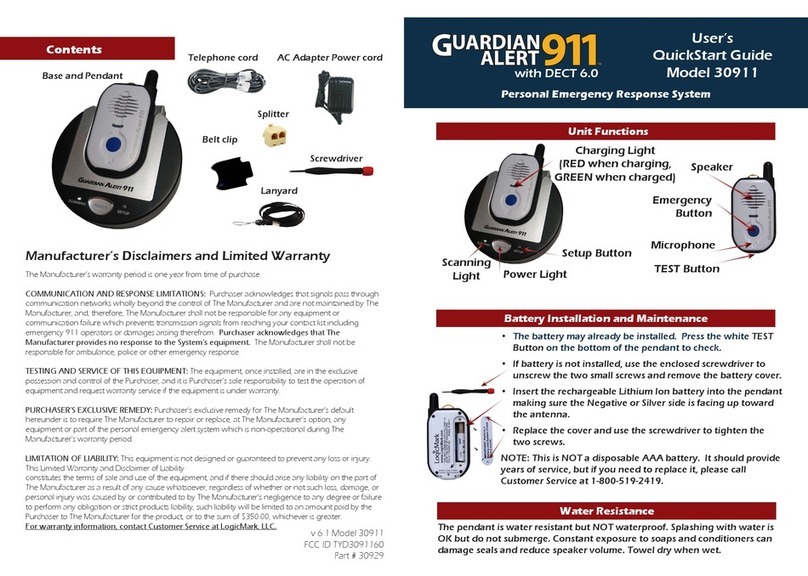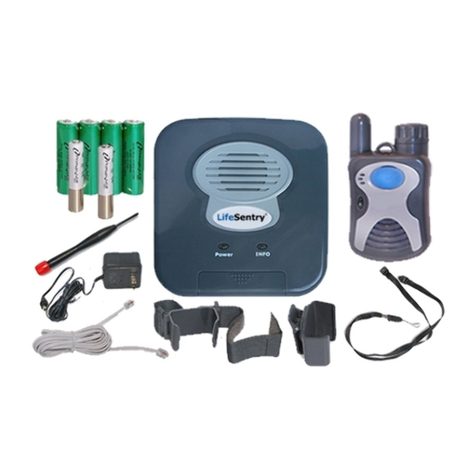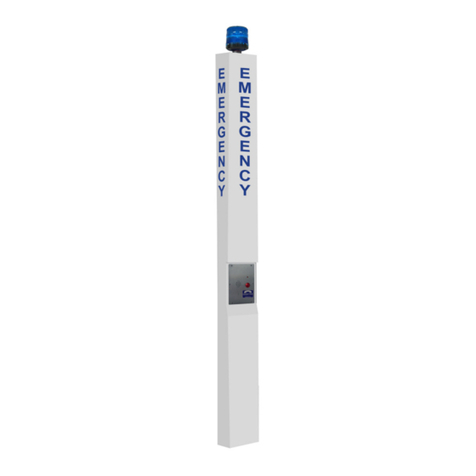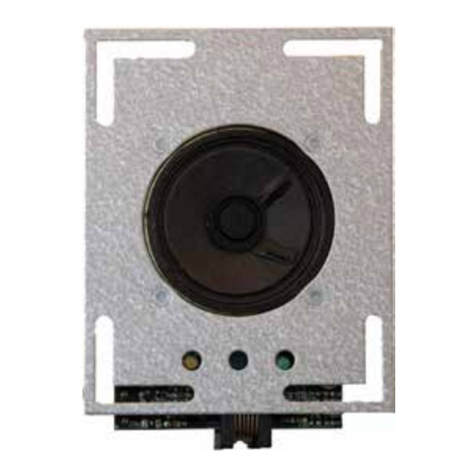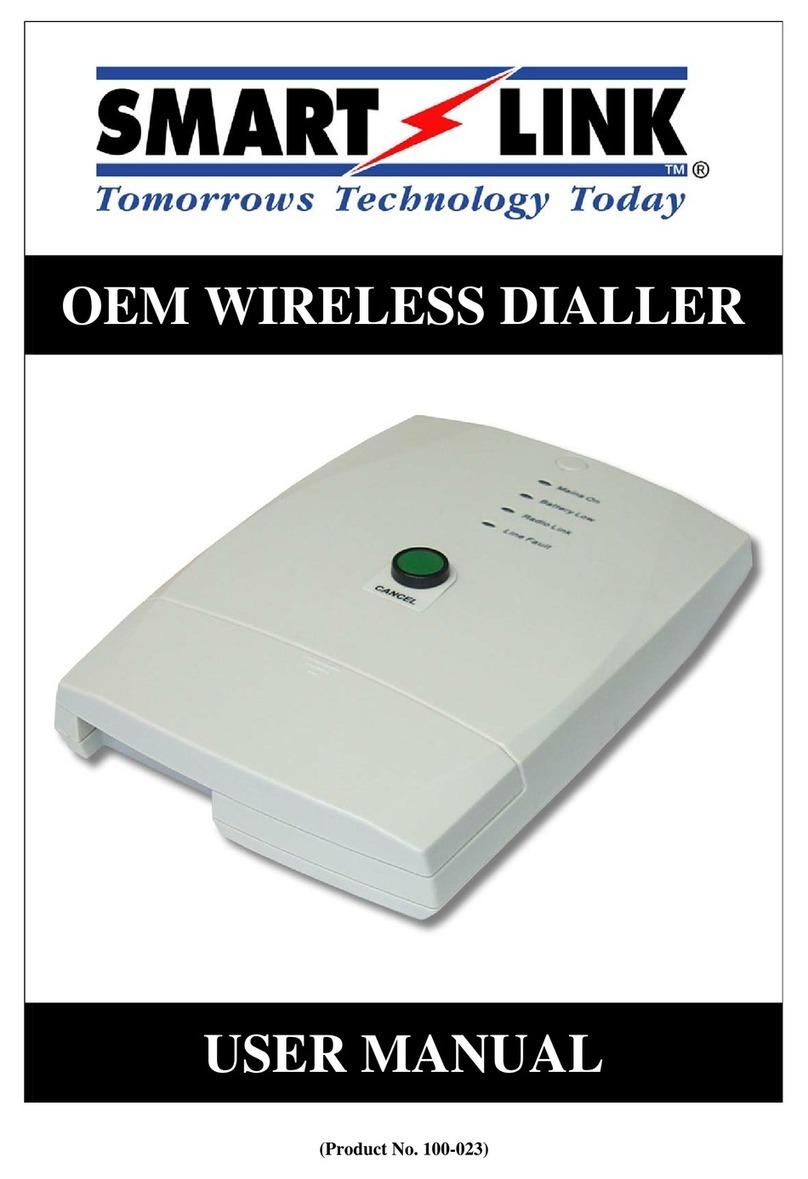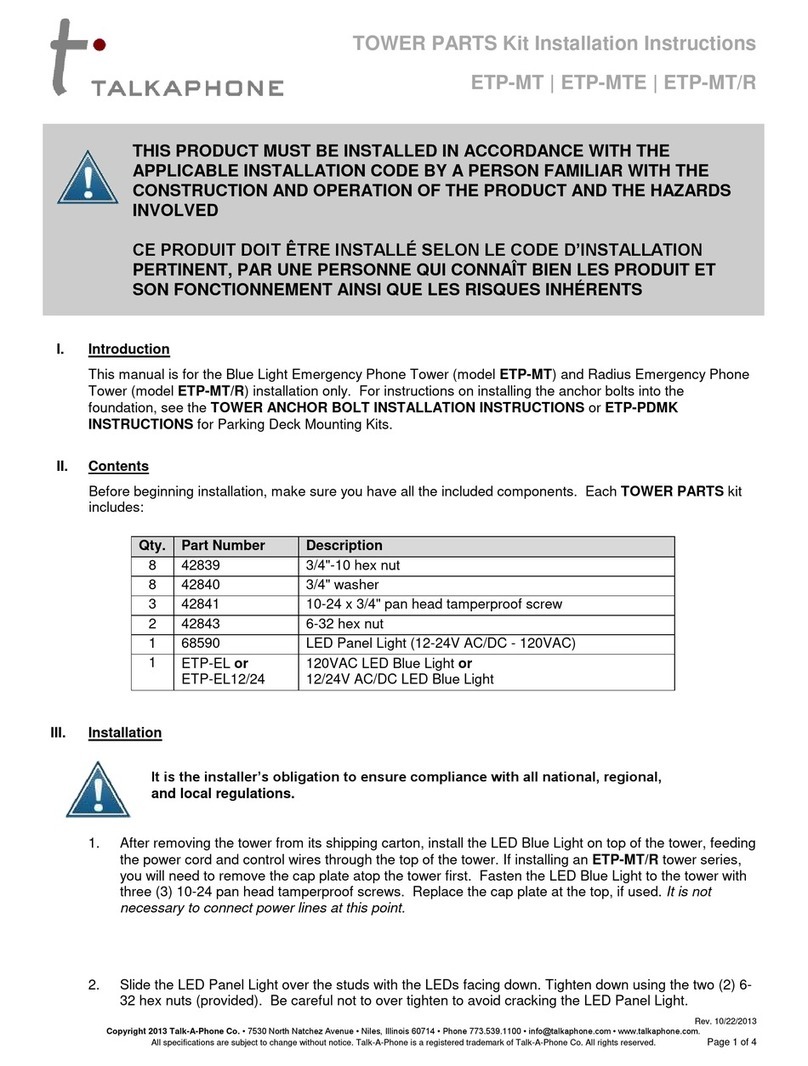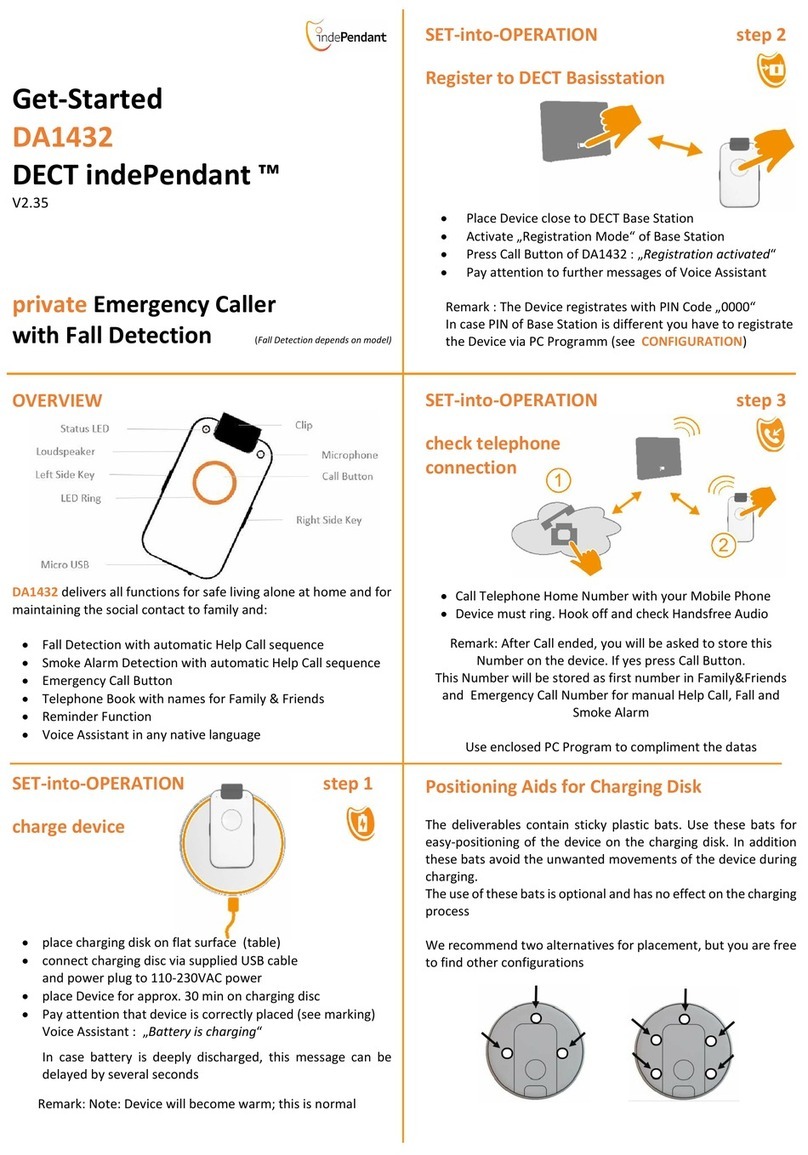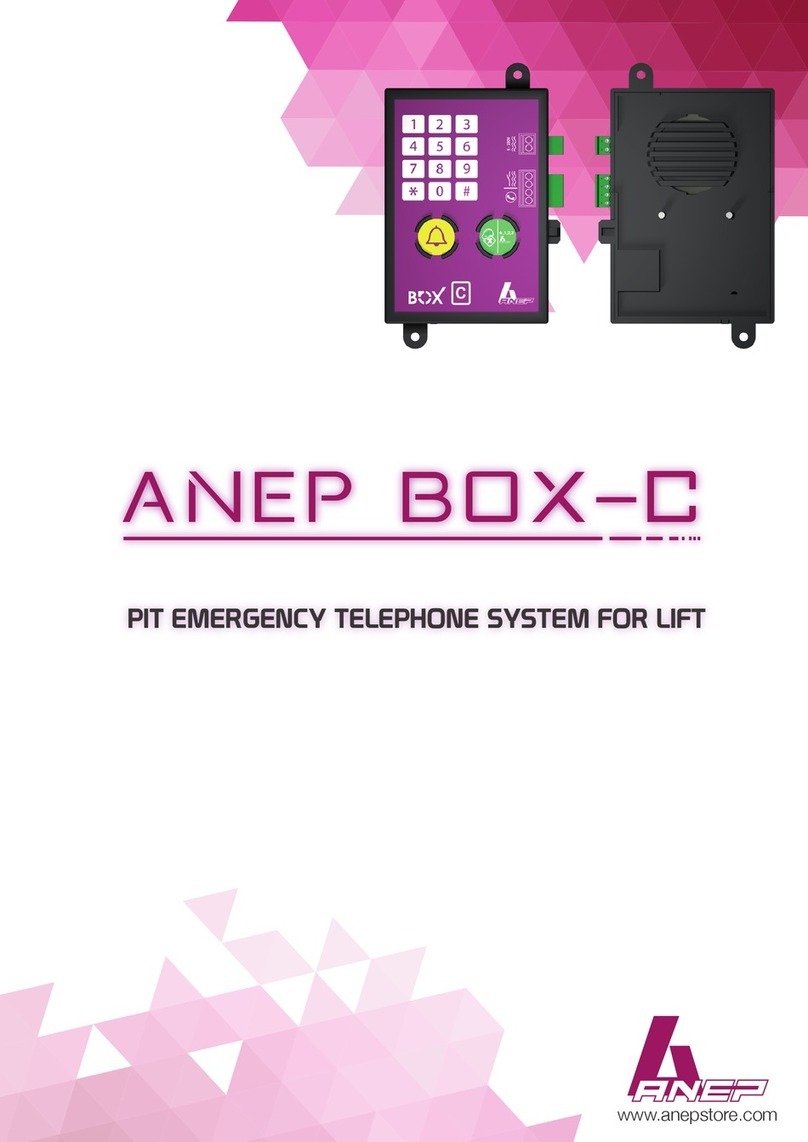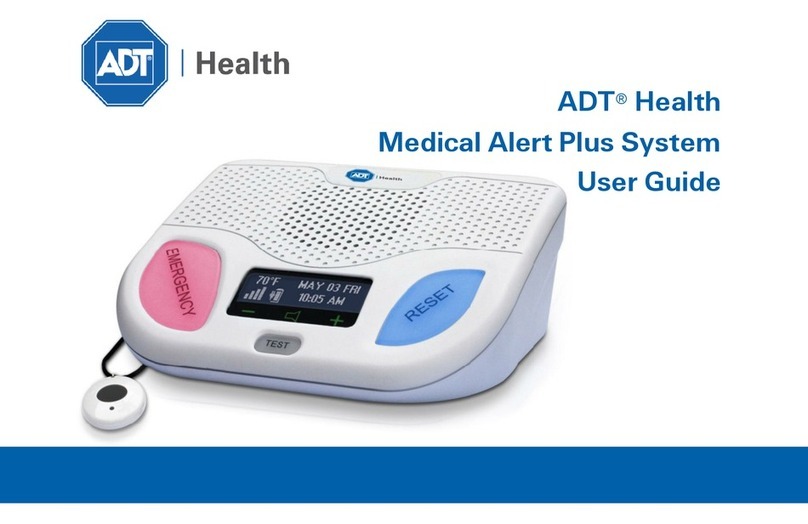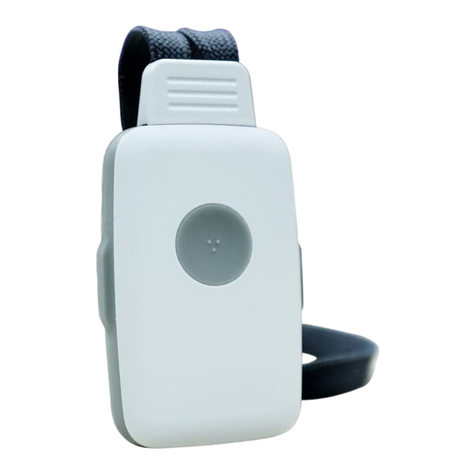
PUB.42004-438K
300 SERIES EMERGENCY TELEPHONE MANUAL
GAI-Tronics Corporation 400 E. Wyomissing Ave. Mohnton, PA 19540 USA
610-777-1374 800-492-1212 Fax: 610-796-5954
VISIT WWW.GAI-TRONICS.COM FOR PRODUCT LITERATURE AND MANUALS
Password Enable Configuration..........................................................................................................................22
Command Select Configuration..........................................................................................................................22
Low-Power Mode Configuration ........................................................................................................................22
Hardware Settings...............................................................................................................................................22
Auxiliary Outputs.................................................................................................................................23
Extreme Cold Temperature Option....................................................................................................24
Voice Annunciation Option..................................................................................................................25
Initial Recording .................................................................................................................................................25
Change Recorded Message .................................................................................................................................26
Voice Annunciation Activation ..........................................................................................................................27
Auxiliary Output Control.....................................................................................................................28
Standard Mode Programming......................................................................................................30
Set-up Sequence ....................................................................................................................................30
Remote................................................................................................................................................................30
Local ...................................................................................................................................................................30
Programming Sequence........................................................................................................................31
Password Disabled Programming.......................................................................................................31
Programming Sequences......................................................................................................................32
Dialing Options...................................................................................................................................................32
Password Protection............................................................................................................................................34
Auto-Answer Alert Feature.................................................................................................................................34
Off-Hook Ringing...............................................................................................................................................35
Disconnect Options.............................................................................................................................................36
Americans with Disabilities Act (ADA) Programming ......................................................................................37
Extended Strobe Operation (Requires External Power Supply)..........................................................................37
Output 4 Control Setup .......................................................................................................................................38
Early Microphone Option ...................................................................................................................................39
SMART Mode Programming........................................................................................................41
Maintenance..................................................................................................................................41
Battery Replacement (Voice Annunciation Option Only).................................................................41
Service....................................................................................................................................................41
Preventive Maintenance for Flush-Mount Phones.............................................................................41
Cleaning..............................................................................................................................................................41
Prevention ...........................................................................................................................................................41
Specifications ................................................................................................................................42
